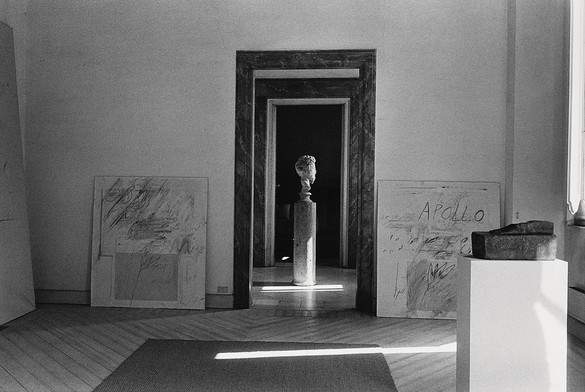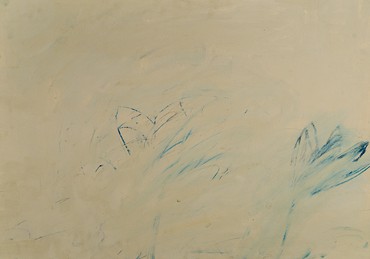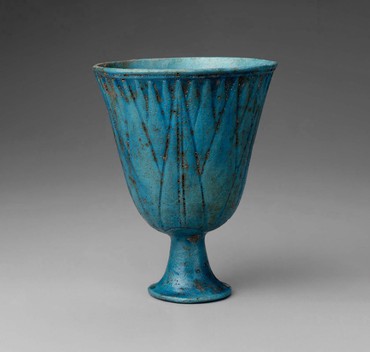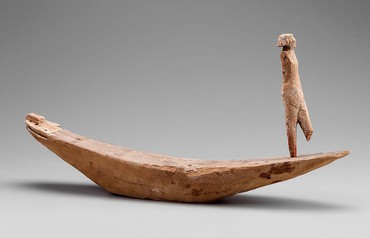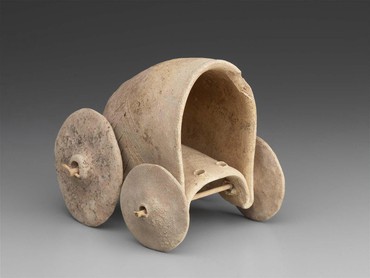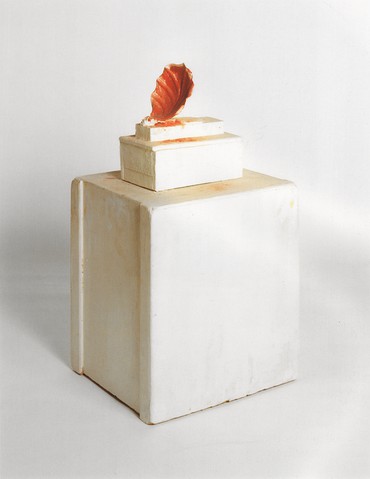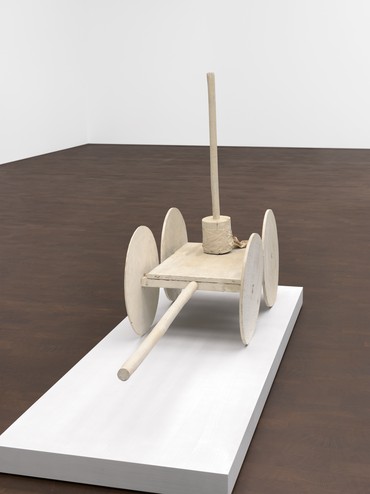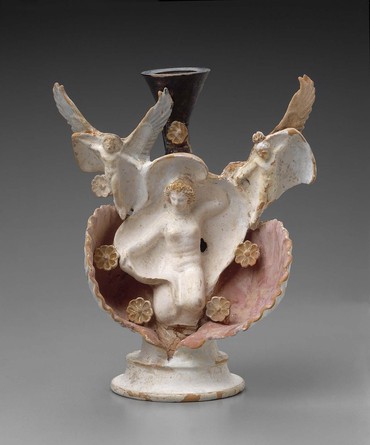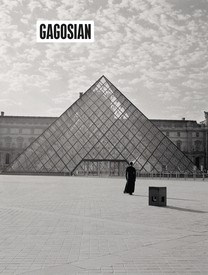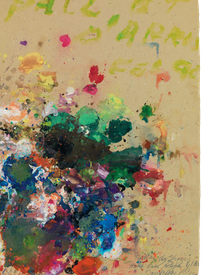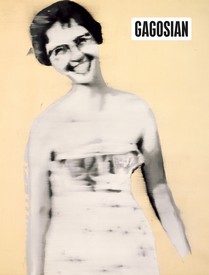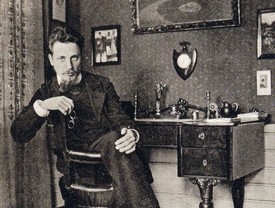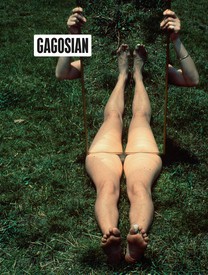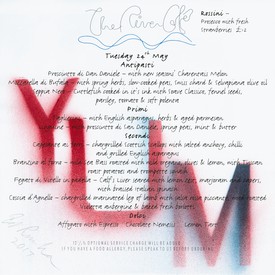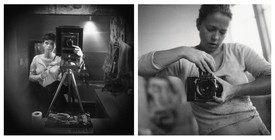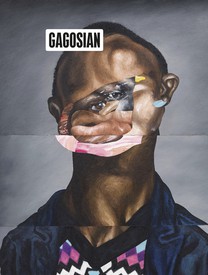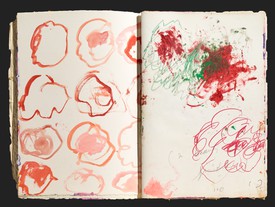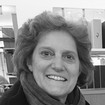
Christine Kondoleon has been the George D. and Margo Behrakis Senior Curator of Greek and Roman Art at the Museum of Fine Arts, Boston since 2001. She was formerly the curator of ancient art at the Worcester Art Museum (1995–2001). In addition to her curatorial work, she is the author of numerous publications, including Aphrodite and the Gods of Love (MFA: Boston, 2011) Domestic and Divine: Roman Mosaics of the House of Dionysos (Cornell University Press, 1995); and Art of Late Rome and Byzantium (Virginia Museum of Fine Arts, 1994).

Kate Nesin is an art historian based in New York. She spent four years as associate curator of contemporary art at the Art Institute of Chicago, where she organized the exhibition Helena Almeida: Work is never finished. Nesin’s book Twombly’s Things was published by Yale University Press in 2014.
Mark FrancisChristine, your exhibition, called Cy Twombly: Making Past Present, looks into the relations between Twombly’s work and the classical world. How did you come to focus on this transhistorical theme?
Christine KondoleonI had a revelation at the fantastic Cy Twombly sculpture show in 2001 at the National Gallery of Art in DC. It was one of those moments when you walk into a show and you go, “Okay, I am in conversation with this artist and I understand who he is and what he’s doing.” And that doesn’t often happen with twentieth-century art, since I’m a Greek and Roman expert [laughs]. It was a moment of jolt and I set out to learn more about him. I felt a real, physical attraction to the work and to his thinking. There were a number of specific pieces there that resonated, especially the sculpture Thermopylae [1991]. Having been a reader of the poet Cavafy for many, many years—his work inspires my work—there was this trajectory or continuum between antiquity, poetry, the artist, the creation, and the reductive simplicity of the coat of white paint. I thought, “Oh, one day that would be an interesting exhibition,” and that was packaged away.
MFYou’ve been thinking about it for a long time.
CKYes, I’ve been sitting on this idea for quite awhile. I mentioned it a few times to my contemporary art colleagues at the MFA in Boston, and it was met with enthusiasm. And then we—all at different times—went to Venice and saw the 2015 show at the Ca’ Pesaro: Cy Twombly. Paradise. Walking around Venice and seeing all of the appropriated bits and fragments from Constantinople embedded in the architecture there prepared my mind, subliminally in a way, for viewing that show. The idea of appropriation and the idea of a modern artist mining history clicked between the show and the location.
Kate NesinYou have mentioned the Venice exhibition a number of times during preparations for the show here in Boston. Was it Twombly’s Leda and the Swan suite from 1980 that you said made the biggest impression?
CKYes, it did!
KNThat has stuck with me, this particular instance of Leda and the Swan (among Twombly’s several) having regalvanized you; it’s a sequence of spare works on paper that’s particularly abstruse, one of the most abstracted routes to thinking about myth, storytelling, and antiquity that I could possibly choose from Twombly’s hefty catalog.
CKAnd there I was—the revelatory moment [laughs]. Yes. I was looking closely, noting, “here is the swan, here’s the explosion.” There was this sort of intuition about what he was doing, and that’s how I work in general so it gave me a large comfort. And then as I was doing the reading to prepare for the exhibition and the catalog, it was like visiting an old friend.
MFBut then the idea of doing it here in Boston made a certain sense in another way, too. Twombly started here as a young man at the Museum School, in the late 1940s, right across the road from the Museum of Fine Arts.
CKYes. The icing on the cake for me was when I discovered that he had been here in his youth. It became very important to understand the young student crossing the street, visiting this collection. What’s important for viewers in general to know is that at that time, from 1947 to 1948, this museum was full of antiquities; nothing was in storage. It was more like study collections.
Another interesting discovery that informed the show came about through the reading I have done for the exhibition. When he was in Boston, he took a Fayum portrait course. He has spoken about the difficulty of that technique. We’re going to have a Fayum portrait from our collection that he could have seen at the time. We know he was an avid museum goer who looked closely at objects and we know that he visited the MFA often so we can extrapolate what he might have focused his attention on while there.
KNYour work, Christine, has drawn out the objects that Twombly may have seen as a student here in the 1940s, yes. And these he seems to have stored away—objects absorbed at that time only to reemerge in his work later. For instance, he first travels to the Mediterranean in the early 1950s and to Egypt in the early 1960s, yet some of the forms that you underscore in the MFA’s Egyptian collection, which Twombly surely would have seen again in Egypt, in fact appear in his own artworks later still. You know, the lotus shapes in the seventies, or the boats that really arrive in full force in the nineties. Such forms hibernate and reemerge across decades. He accumulated places and objects into an internal archive of sorts. And this has been important for your show in part because there are as many, or more, points of indirect and subjectively remembered connection to ancient precedents, in Twombly’s works, as there are direct ones.
CKThe materiality of these objects and the materiality of the techniques stay with him. Yet, at the same time, he is looking for inspiration from immaterial things—from words and poets.
We owe a lot to Kirk Varnedoe for his wonderful work in the 1990s on Twombly. He surfaced a lot of these rather arcane bits of information that are footnoted in that terrific essay from the MoMA [the Museum of Modern Art, New York] retrospective catalogue, where he writes about Twombly’s reaction to the Tutankhamun displays at the Cairo Museum. Twombly was attracted to these little, simple daily objects you’d find in the tomb, white painted constructions of wood—not unlike things he had already been making, and would later continue to. That clicked for me quite a bit; that simplicity attracted him, the daily-life quality of it. But that also gets married with a deep appreciation and sense of the sacred and the ancient world’s ideas of creating places for worship.
MFKirk Varnedoe also came from the American South, and there was this great generation of American artists—Twombly, Robert Rauschenberg, and Jasper Johns—all from the South. It’s quite often alluded to that Twombly’s upbringing had a big impact on him. And of course, he went back to Virginia and lived part of each year there in later life, too. But the curious thing to me is that in a way, Johns and Rauschenberg don’t really bring that supposedly classical reference into their work—and perhaps that’s because they’re not from Virginia. I mean, the South isn’t just one thing. This idea of daily life maybe is quite close to their work, too, in a different way.
KNThis connection is often drawn between Twombly’s two homes, yes, an artist born and raised in the American South who then moves to southern Europe. He himself elaborated on those connections, joking about a kind of Neoclassical excess—how there were more columns where he grew up, in the South, than in all of Greece and Rome—which is a joke that, in my view, raises all sorts of questions about the “neo-” or new, revival, belatedness, and both the means and the ends of certain kinds of cultural identification.
Your daily-life question is interesting. For me, it’s as if Twombly treats classical material, with its grand, even epic associations, as a kind of vernacular—he felt it could be. That it could be treated personally, in any case, and sometimes lightly, too. Mary Jacobus’s work, and now Christine’s work, have helped me focus on the fact that Twombly was reading ancient texts in translation, appropriating lines from English translations and often editing as he went. Maybe misspelling, mistaking, in many cases I would guess intentionally, playfully, performing a casual relationship to such material, and in the process showing just how mediated such historical material always is. There’s a way in which his work offers the classical world as available both to him and through him, as a kind of vernacular.
CKThe idea of misspelling is a key thing about him—we keep going back to the fact that he trips over himself in a way, purposely perhaps, or erases himself on drawings and canvases. Yet, there are also moments when it’s clear that he’s transcribing complicated Greek words and he has to pay attention to how he’s doing it. There’s no way he would’ve known some of these obscure Greek words without a heavy engagement with footnotes and commentary on the original texts. I’m proud to say that the exhibition includes these fixed points of revelation that show him as a very close student of mediated text, which is translated and footnoted and annotated.
MFI wonder, too, whether his time at Black Mountain College, right after his time in Boston, further developed his interest in language. Charles Olson was such a key figure there, as well as Cage and others.
CKThat was another revelation for me; I’m not a Black Mountain College aficionado. Olson wrote so much about sound and breath. And then if you look at the way Twombly spaces letters or leaves space on the canvas or paper — that’s where I started connecting the dots and thinking about how he’s inviting you into the active processes of enunciation, to recitation. Sound was so important.
KNAnd Christine, I have learned from you that so many of the ancient, carved inscriptions that Twombly would have seen on the streets in Rome—which I had thought about a lot in terms of the formal properties of his sculptures—were actually meant to be read aloud.
CKYes. The ancients were very much about recitation, much more than about writing. Writing wasn’t so important to them. It was recitation and memorization.
MFBecause it was an oral culture—
CKYes, absolutely. Again, I think Twombly was very smart, an autodidact, and that he intuited some of that. But if you think about it, as you yourself walk down the street in Greece or Rome and you see an inscription, you start to sound out things, right? That’s what the ancients intended you to do. It’s interesting for our readers and visitors to understand the context of use in the ancient world and how contemporary artists like Twombly in some way or another create that bridge.
KNI think the title of the show, Making Past Present, is true to that sense of bridging. It is a show that demonstrates how profoundly Twombly loved this material, which isn’t the same thing as romanticizing it. We are looking at one, quite singular artist’s relationship to material antiquity—yet Christine has also conceived a show about how those same ancient objects, and now Twombly’s objects, too, exist in an ever shifting present, our present.
MFDo you think you could even say that his inscribing of names is itself a form of love and a form of memory? Where he simply writes “Orpheus” or refers to Aphrodite or Dionysus.
CKThe fact that he’s writing “Venus,” or “Dionysus,” naming them on the surfaces of drawings and paintings—in many different ways, naming—he is memorializing the gods. That’s the act. It is not the trivial, schoolboy work of a copyist. It’s a very conscious decision to say, “I’m carrying forth this tradition. I’m bringing forth these names. Just as I want you to remember me, you’re going to remember them.”
MFDoes this project indicate that the museum will continue to show contemporary artists within these historical collections?
CKYes. I’m excited that this exhibition proposal grew very quickly into a second stage on the part of Matthew Teitelbaum, our director, who immediately saw the opportunity, beyond this show, to link the encyclopedic collections here—which are extensive—with contemporary art, which is his particular interest. He’s been able to endow a gallery within our classical wing, which will be dedicated for the next twenty-five years to a rotation of artists who will bring us both forward and back. So you have the juxtaposition of ancient collection objects with a gallery dedicated to recent artists who are in some sort of dialogue with the ancient world, or who have lived in or been inspired by the Mediterranean one way or another closer to our own time.
